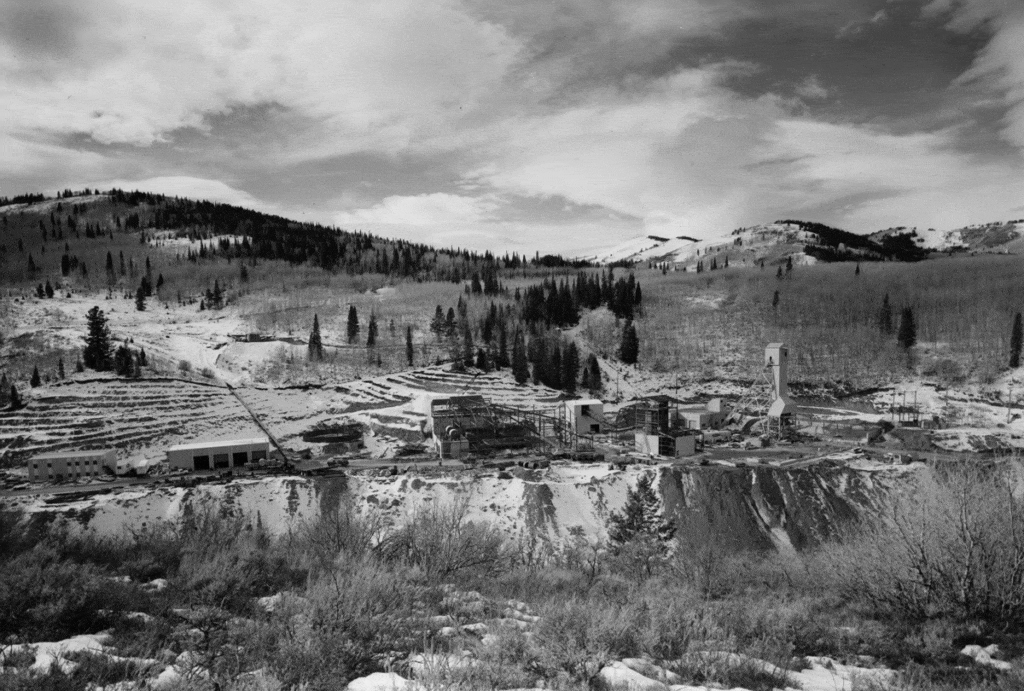Deer Valley Resort is celebrating its 40th season in operation this ski season. This is the second article in a series covering Deer Valley from Park City’s mining era through the resort’s early days.
In 1970 the two largest shareholders of UPCM (Anaconda and American Smelting and Refining Corporation) created Park City Ventures. Their vision: rehabilitate and reopen the mines owned by UPCM.
In 1975 United Park City Mines (UPCM) and other interested parties granted the Royal Street Development Corporation permission to construct Deer Valley Resort. Royal Street’s vision: create the world’s premier luxury ski experience.
One business venture rooted in Park City’s future and the other in its past. How would this generational tug of war play out?
Dating from the late 1860s, Park City owed its existence to mining. It can be argued that the boom years lasted until the onset of the Great Depression. After over sixty years, further mineral extraction required digging deeper to find increasingly smaller amounts of ore – an expensive and difficult proposition.
Even the onset of World War II and its nearly insatiable appetite for zinc and lead failed to reverse local economic decline. Hampered by labor shortages, production remained 35% below the pre-war years. The grim situation became a free fall after 1949. By the late 1950s Park City resembled a ghost town with crumbling infrastructure, abandoned buildings, and a population decline of 70% from 1900. As local historian Gary Kimball noted, “We were poor; We just didn’t know it because everyone else was poor”.
Despite the deepening gloom, optimism flourished. This community is both resilient and hopeful by nature; These qualities prove essential in an industry where both workers and producers exert no control over the price for their product. These values are subject to the vagaries and, at times, cruelty of global commodities markets.
By the late 1950s most of Park City’s mines were consolidated under UPCM. Besides possessing all subsurface rights (both minerals and water), UPCM controlled substantial land rights as well –approaching ten thousand acres. To diversify revenue, create jobs for unemployed miners, and revive the local economy UPCM created a recreation division in the early 1960s. Their goal was to take advantage of the reliable and prolific snow to create a ski and resort industry. Thus, in 1963 Treasure Mountains opened (the forerunner of Park City Mountain Resort). With that mission accomplished, UPCM and local miners doubled down in the quest for another mother lode.

Credit: Park City Historical Society & Museum, Jordanelle Special Service District Collection
Anaconda and ASARCO were well respected companies. Mineral extraction was their business – and one at which they excelled. Studies indicated that profitable mineral reserves in town exceeded 350 tons. Validity of the return on investment (ROI) models depended on both the cost of production and the pricing of global commodity markets, however. Their potential investment to access, remove, process, and transport the minerals was substantial, but, undaunted, Park City Ventures proceeded with their grand plans. Unbeknownst to them, events in the ensuing decade – both near and far – would invalidate their ROI formulas.
By 1975 PC Ventures employed over 300 workers. Their cumulative investment exceeded twenty million dollars. However, costs to resume and sustain production had been underestimated. Other worries included declining commodity prices, recession, inflation, and rising unemployment.
One threat not yet realized was literally directly above them – Royal Street Corporation intended to build the world’s premier ski resort. Should Royal Street Corp. realize their “vision,” the value of the ski industry might eclipse the value of local mining interests. Could the “Greatest Snow on Earth” in fact be the final nail in the Park City mining industry’s coffin? Stay tuned for next week.